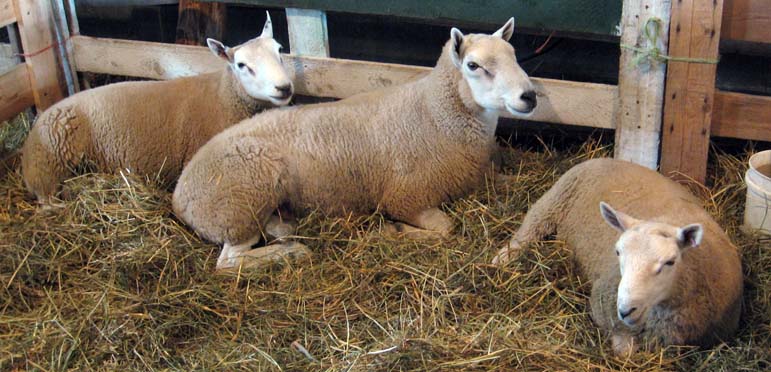Border Cheviot Sheep
The Border Cheviot originated as a mountain breed, native to the Cheviot Hills between Scotland and England, where the climate is harsh and the conditions are rugged. Cheviots are extremely hardy and can withstand harsh winters and graze well over hilly pastures. They were bred to look after themselves.
Recognized as early as 1372, the breed is romantically believed to be descended from the sheep off of a wrecked Spanish Armada (1588) ship, which swam ashore and lived wild. They migrated into the Cheviot Hills, which traverse the boundary between England and Scotland, and it is from these hills that they take their name
With only the fittest surviving they developed particularly healthy feet and coats suited to the harsh climate and wet winters. For centuries they have grazed their native Cheviot Hills and the Hills alone afforded their only sustenance and shelter. The severe storms in Scotland in 1860 tested the hardiness of the Cheviots, for they survived while other well known breeds perished with cold.
The Cheviot is a distinctive white-faced sheep, with a wool-free face and legs, pricked ears, black muzzle and black feet. It is a very alert, active sheep, with a stylish, lively carriage.
Cheviots are one of the smaller commercial breeds, weighing between 130 and 200 pounds at maturity. This manageable size makes them incredibly efficient grass to lamb converters. Border Cheviots are extremely vigorous, hardy and good foragers that can survive in harsher conditions than many other sheep. They are a quick and alert breed, the ewes are excellent mothers who need little help at lambing. Border Cheviot rams are used as terminal sires to produce a fast rate of gain in the Down breeds, and to give lambs smaller front ends and heads for easier delivery in first time ewes
Wet conditions are intolerable to many breeds of sheep and cause scald (a condition of the feet caused by terminally wet conditions - similar to athelete's foot). The Cheviots however, have hard black hooves and a heritage of suffering through wet conditions without developing lameness
Cheviot wool has a distinctive helical crimp, which gives it that highly desirable resilience. They have a medium fine fleece (50-56's spin count) and a generous staple length (4 to 5 inches) which made it the foundation fiber of the world renowned Scotch Tweed industry. Cheviot wool, which is principally a carding wool, has been used for generations in the making of Scotch Tweed, or rather, Cheviot Tweed. This is the trade name for what is the best, most useful and most lasting of all the different makes of cloth.
For today's handspinner, Cheviot wool is an excellent fiber to work with for the novice or expert spinner.
